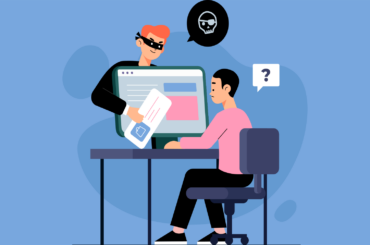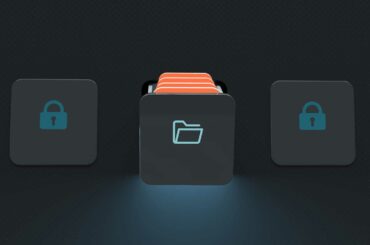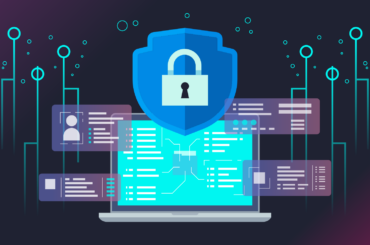With code being a vital part of a computer program, the whole program can be compromised by cybercriminals if it happens to have vulnerabilities. Even large tech giants like Apple, Google, etc., have reported security flaws in their software and this has made it essential to maintain the code’s security and quality so that cyber criminals don’t take advantage of the vulnerabilities in the code to exploit the software.
This article lists a few best practices for developers to keep their code secure.
Secure Coding
Secure coding or secure programming is nothing but the practice of writing code or developing software with an aim of preventing potential vulnerabilities. It involves using high-level language to write code that adheres to strict security principles. Secure coding involves creating a secure development and coding environment which is built on a secure IT infrastructure, which uses secure software, hardware, and providers. Most of all, the written code must not have errors, bugs, and other flaws that could pose security risks.
UC Berkeley Security Policy and Open Web Application Security Project (OWASP) Coding Practices, SEI CERT coding practices, are some of the secure coding standards that are used and widely accepted.
Why Should You Use Secure Coding Techniques
The majority of the software we use in our daily lives tends to have security flaws. Cybercriminals launch different kinds of attacks every day to find vulnerabilities in the software they can exploit. Secure coding practices will help find and remove vulnerabilities in code and software that cybercriminals can exploit.
Even a small mistake or silly bug in the code can result in security risks. As mentioned above, even tech giants like Google have reported vulnerabilities in their software and have suffered cyber attacks. This shows how vital application and software security is.
Security flaws in software can happen at any stage of the development process. Failing to identify security requirements upfront and errors in the conceptual designs are two stages of the development lifecycle where security flaws can happen.
Technical vulnerabilities that might be introduced as a result of poor coding practices, introducing errors during updates, and implementing the software incorrectly, are other stages where security flaws can happen.
Security has to be considered from the beginning of the development process and it must not be implemented during the later stages of the development process.
Secure Coding Checklist
Keeping the coding process simple is the key to securing the code. Here is a secure coding checklist that will help you develop secure code.
1. Input Validation
Input validation to validate input data from untrustworthy data sources is mandatory, as you can eliminate software vulnerabilities with proper input validation. It is important to be skeptical of external data sources and if there happens to be an input rejection, it could possibly be a validation failure.
2. Authentication
Implementing proper authentication is crucial to maintain the code’s security. Make sure to authenticate all the pages and resources. Administering the authentication system on a trusted system will help you to quickly set up and use standard authentication services.
While authenticating, segregate the authentication logic from the requested resource. For enhanced security and privacy, the app you develop has to ensure that it stores passwords cryptographically if the app under development has a credential store. To transfer authentication credentials, it is highly recommended to use HTTP POST requests.
3. Password Management in Code
Users’ passwords must not be visible on the screen and must be concealed. As brute force or password guessing attacks are quite common, the account should be set up in such a way that it gets disabled for a certain time period if wrong passwords are entered multiple times. Likewise, temporary passwords must not be valid for too long. One of the best ways to secure sensitive and financial accounts is by adding multi-factor authentication.
4. Access Control
It is crucial to restrict access to unauthorized users and only the authenticated user must be granted access to the admin page of your app. Access to sensitive systems must be denied to new users. Likewise, access to app data, user attributes, data attributes, protected URLs, and functions must be granted only to authorized users and restricted to others. Whenever you release a new feature, restrict access to new features until it is configured properly.
5. Log Errors
Logging errors will help developers to diagnose errors and make sure they don’t impact the app. Errors caused by bugs in software can lead to vulnerabilities. Keeping track of the errors and handling them effectively will help prevent catastrophic failures. Documenting errors and failures is mandatory to comply with secure coding standards.
6. Data Protection
The best way to improve data protection is by using cryptographic hashes to encrypt sensitive information on the server side. This will also prevent users from downloading server-side code. Make sure the auto-complete feature on forms is not turned on to enhance security.
7. Communication Security
Implementing strong encryption mechanisms like SSL/TLS will help secure the connection. Attackers will be able to easily access sensitive data on pages that are not encrypted. So SSL certificates are mandatory for communicating securely.
8. Database Security
With databases being very precious, it is crucial to employ database security. Code injection, table dropping, etc., can have serious consequences. Provide access to read and not write wherever necessary. Input and output validation and strongly typed queries are recommended for database security. Likewise, remove default passwords and replace old passwords with strong new passwords.
Conclusion
Though it is not possible to make your code completely secure, you can take measures to keep your code secure. Developers can follow secure coding techniques to remove vulnerabilities and prevent cyberattacks.





